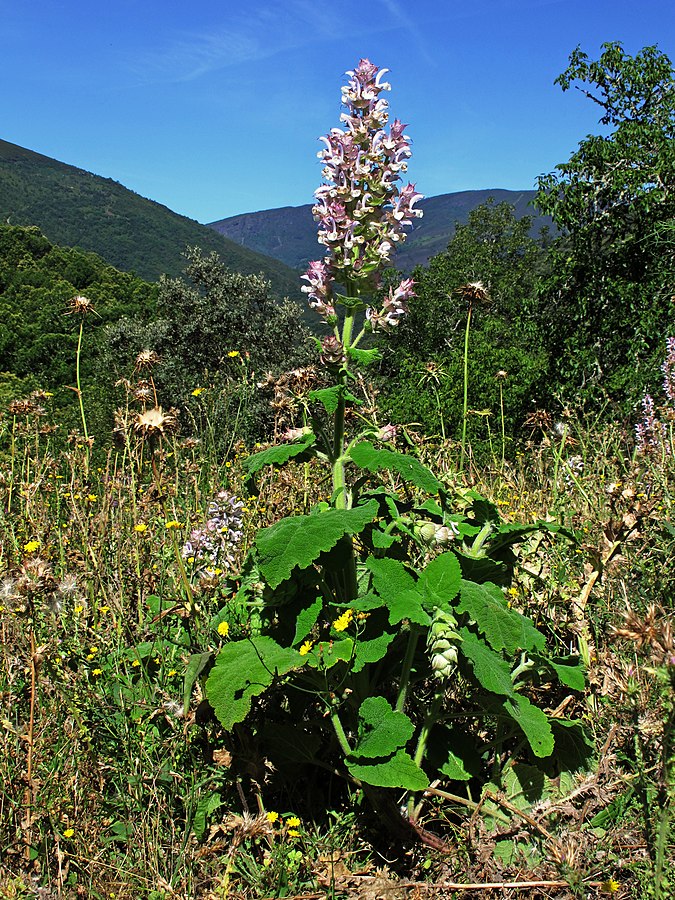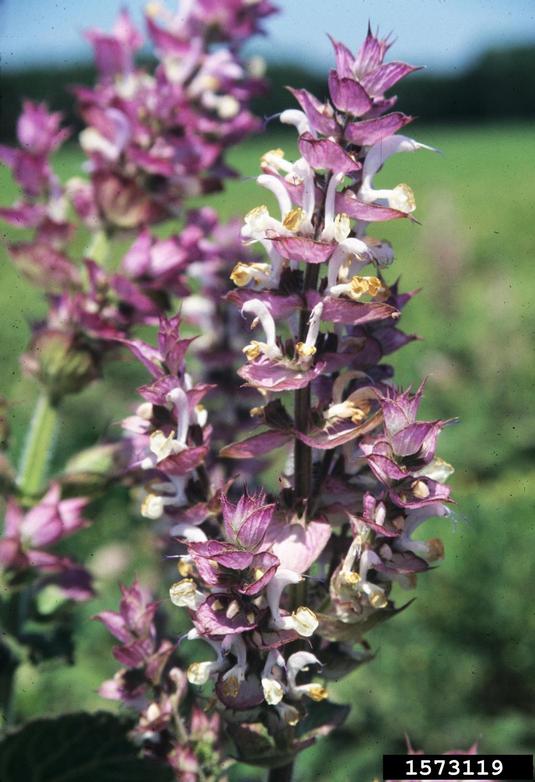Clary Sage

Clary Sage
(Salvia sclarea)
Priority: - Prevent / EDRR
Tags: Terrestrial
Identification and Reproduction
Identification:
- Clary sage is a biennial plant that is currently grown for essential oils.
- Stems are square and grow up to 1.2 m tall. Can grow upright or sprawl laterally.
- Leaves have a wrinkled appearance and covered in hairs. They are larger at the base, reaching 30 cm long.
- Flowers are found in whorls of 2-6 flowers and collectively make a spike on the terminal end of stems. Flowers are bilabiate with colourful bracts, ranging from lilac, white or pink in colour.
Reproduction:
- Reproduces by seed.
Habitat & Ecology
- Clary sage thrives in fully exposed sites.
- It does well in medium moisture and well-drained, sandy or gravelly soils.
- Intolerant of high humidity and temperatures.
- Is tolerant of drought.
- It can become unmanageable on open range lands or pastures.
- Has yet to be observed in BC but is present in the state of Washington.
Impacts
Ecological:
- They displace native plant species.
- Reduce wildlife foraging and habitat.
- Under the right conditions will escape cultivation and take over exposed sites.
Management
Prevention is a high priority for this species.
- Maintain good ground cover to slow the spread and prevent invasive establishment.
- Do not purchase, plant or distribute clary sage.
- Learn to identify clary sage.
- Report this plant if you think you have seen it.
Resources
For more details on identification and historic uses of clary sage, check out the Plants For A Future datasheet on Salvia Sclarea here.
Header photo (Udo Schröter).




